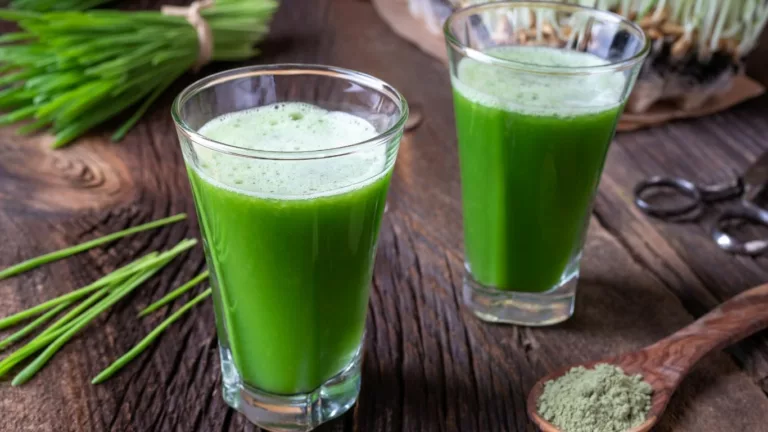Tasty GERD Friendly Bento Box Ideas That Actually Work
If you’re living with GERD (Gastroesophageal Reflux Disease) like many of the patients I’ve helped as a Medical Assistant in a Gastroenterology Clinic, you already know that planning meals isn’t just about nutrition—it’s about comfort, too. One of the most common questions I get is, “What can I pack for lunch that won’t leave me regretting it all afternoon?” That’s why I’m excited to share some GERD friendly bento box ideas that I’ve recommended countless times—and even use myself! These meal options are not only reflux-friendly but also colorful, tasty, and easy to prep ahead of time.
Why Bento Boxes Are a Game-Changer for GERD

Let’s be real—finding meals that don’t trigger reflux can feel like solving a daily puzzle. But bento boxes? They’re basically your secret weapon. Why? Because they help with portion control and give you variety without piling everything into one reflux-inducing mess. Think of them as little food compartments of joy that can keep your stomach calm and your taste buds happy.
What Makes a Bento Box GERD-Friendly?
To build a GERD-friendly bento box, you want to avoid common triggers like acidic foods, spicy items, and high-fat meals. But that doesn’t mean it has to be bland or boring. Here’s what I usually recommend:
- Low-acid proteins: Think grilled chicken, turkey breast, or baked tofu—nothing too greasy or spicy.
- Non-citrus fruits: Bananas, melons, and apples (peeled) are my go-to suggestions.
- Cooked veggies: Steamed carrots, green beans, or zucchini are gentle on the stomach and easy to digest.
- Complex carbs: Brown rice, quinoa, or whole wheat pasta (as long as it’s not smothered in tomato sauce).
- Healthy fats: A few slices of avocado or a sprinkle of flaxseeds can go a long way without causing issues.
How I Helped a Patient Build the Perfect Bento Box

One of my favorite moments at the clinic was when a patient came in totally frustrated with lunch options. She loved spicy food (who doesn’t?), but her GERD had other plans. Together, we built a simple bento box plan that changed her lunch game. It had turkey roll-ups, steamed broccoli, a small portion of brown rice, and a few melon slices. She emailed me a week later saying she felt full, satisfied, and best of all—not bloated or in pain. That’s the power of small, intentional changes.
Flavor Without Fire: Making GERD-Friendly Food Taste Good
Let’s bust a myth right here—GERD-friendly doesn’t mean flavorless. I always tell patients: season smart. Avoid chili powder and hot sauces, but don’t be afraid to get creative with herbs and mild spices. Here are some flavor-boosters I personally love that are gentle on reflux:
- Fresh herbs: Basil, parsley, dill, and oregano bring dishes to life.
- Mild seasonings: A touch of ginger or turmeric adds warmth without the burn.
- Infused oils: A light drizzle of garlic-infused olive oil (skip raw garlic though!) can be a game changer.
Easy Packing Tips from the Clinic

I’ve seen too many patients skip meals because they’re afraid of triggering their GERD. That’s where good prep habits come in. Here are a few tips I always share:
- Prep ahead: Cook proteins and grains in batches so you can mix and match throughout the week.
- Use silicone dividers: They help keep acidic and non-acidic items separate, which can really help some folks.
- Keep snacks light: Pack GERD-safe snacks like plain rice cakes, cucumber slices, or low-fat yogurt to nibble between meals.
Planning your lunch shouldn’t feel like navigating a minefield. With the right ingredients, some creativity, and just a little prep, GERD friendly bento box ideas can be not just a possibility—but a tasty, healthy, and reflux-safe reality. Stay tuned for more meal tips that work in the real world (not just on paper)!
Balancing Variety and Reflux Relief in Bento Box Planning

So, once you’ve got the hang of the basics, the next step is keeping things interesting. Honestly, one of the biggest struggles I hear from GERD patients is boredom—eating the same few “safe” foods over and over. Been there, heard that! But variety is 100% doable, even with restrictions. It’s all about mixing up textures, colors, and flavors in your GERD friendly bento box ideas.
Here’s something I do myself: I create theme days. For example, “Mediterranean Mondays” might include grilled chicken, cucumber slices, hummus, and a couple of pita triangles (lightly toasted, no garlic). “Asian-Inspired Wednesdays” could mean jasmine rice, steamed bok choy, and tofu with a drizzle of sesame oil. Keeping a rough theme helps me stay creative without spending hours staring into the fridge wondering what won’t cause heartburn.
Smart Swaps That Actually Work
Over time, I’ve come to love some GERD-friendly swaps that make a huge difference—without sacrificing flavor or satisfaction. I’ve recommended these to plenty of patients who had their doubts at first, but came back with rave reviews:
- Greek yogurt instead of sour cream: It’s creamy, has that tangy vibe, and is way gentler on reflux.
- Mashed avocado instead of spicy guac: Skip the jalapeños, lime, and tomatoes. Add a little olive oil and cumin instead.
- Oven-roasted zucchini chips instead of greasy potato chips: Still gives you the crunch without the regret.
- Herbal tea for iced coffee: I know, I know—don’t come for me. But peppermint or chamomile iced teas can be refreshing and reflux-soothing.
What I Pack in My Own GERD-Safe Bento Box

Let me give you a peek into a real-life lunch I packed last week. Honestly, it was one of those “I woke up late, don’t have time to cook” kind of mornings. Still, I threw together a pretty solid bento box:
- Main: Sliced grilled turkey breast with a light rosemary rub
- Side 1: Steamed sweet potato cubes (sprinkled with cinnamon—trust me, so good!)
- Side 2: Cucumber rounds and shredded carrots with a little rice vinegar
- Fruit: A small container of diced honeydew melon
- Snack: Two brown rice cakes with a thin layer of almond butter
And I actually felt *great* that afternoon. No reflux, no heavy feeling, just steady energy. That’s the kind of lunch win we all need more of, right?
When You’re Short on Time (Because We’ve All Been There)
Let’s be real: not everyone has time to prep Instagram-worthy bento boxes every morning. Heck, sometimes I barely get out the door with matching socks. So here are a few of my personal go-to tips for saving time without skimping on reflux-friendly meals:
- Pre-chop veggies: On Sundays, I slice up carrots, zucchini, and cucumbers and keep them in sealed containers.
- Use leftovers creatively: Last night’s baked chicken? Boom, today’s bento protein.
- Keep a “GERD-safe stash” at work: I’ve got a drawer with almond crackers, herbal tea bags, and a couple of apples. Lifesaver on hectic days.
Common Mistakes to Avoid in GERD Bento Boxes

Now, even with the best intentions, I’ve seen (and made!) a few mistakes when building GERD-friendly bento boxes. Here are the most common ones I point out to patients—and wish I could go back and tell my younger self too:
- Skipping protein entirely: A carb-only lunch can spike blood sugar and leave you with reflux *and* a crash.
- Forgetting hydration: If your bento doesn’t include a hydrating food or drink, pack a water bottle. Dehydration can actually worsen GERD symptoms.
- Including acidic fruits “just this once”: I used to toss in a few strawberries thinking they were harmless—big mistake for my reflux.
- Mixing spicy and fatty: A little bit of one can sometimes slide by, but both in one meal? It’s basically asking for heartburn.
Building these lunches takes a little extra thought, sure—but it becomes second nature once you figure out what works for *your* body. Just remember, a GERD-friendly meal doesn’t have to be boring, flavorless, or complicated. It just needs to be smartly planned and lovingly packed.
Taking Bento Boxes Beyond Lunch: GERD-Safe Meals for Anytime

Here’s something I learned from both my clinic work and my own kitchen experiments: GERD friendly bento box ideas aren’t just for lunch. You can totally repurpose the concept for breakfast, snacks, or even a light dinner. The key? Keeping it simple, balanced, and reflux-friendly without losing the fun of variety.
One of my favorite patient success stories was a guy who worked night shifts. Traditional meals just didn’t work for him—he’d wake up at 3 p.m. and grab whatever was around (usually spicy takeout). After we started prepping bento-style boxes together, his nighttime reflux episodes dropped dramatically. For dinner, he’d do grilled chicken, steamed asparagus, and rice with a side of peeled apple slices. Not only did he sleep better, but he said he finally felt like he had a routine again.
Breakfast Bento Box? Yep, It Works
This idea kind of happened by accident for me—I was tired of plain oatmeal every day. So I made a little morning bento: scrambled egg whites, a slice of whole-grain toast, some cucumber rounds, and a small portion of melon. It felt like a real meal instead of just shoving cereal into my face. Plus, no reflux. Win-win!
- Mini hard-boiled eggs (or egg whites if whole eggs trigger you)
- Soft fruits: Think bananas, honeydew, or even papaya
- Small side of oatmeal with almond milk and a sprinkle of cinnamon
Meal Prep That Doesn’t Drive You Nuts

I get it—meal prep can feel overwhelming, especially when you’re dealing with GERD and trying to avoid food triggers. But prepping GERD-friendly bento boxes doesn’t mean hours in the kitchen. It’s more like… 30 minutes if you keep it tight.
Here’s my usual Sunday setup:
- Grill or bake a batch of plain chicken breast and turkey slices
- Steam two or three veggies (broccoli, zucchini, carrots—whatever’s in the fridge)
- Make a simple grain like quinoa or brown rice
- Chop fruit and store it in portioned-out containers
Then, each morning, I just grab a few pieces from each group and drop them into a bento container. I mix it up so it’s not the exact same thing every day. One morning might be quinoa with steamed carrots and turkey, the next might be brown rice with cucumbers and chicken. Easy, filling, reflux-safe. And honestly, a lot cheaper than takeout.
Helpful Tools I Recommend to Patients
From clinic days to home life, I’ve found that the right tools can make a world of difference. I always suggest patients invest in a few bento essentials:
- Leak-proof bento containers (trust me, you don’t want rice vinegar leaking in your bag)
- Mini condiment containers for low-fat dressings or infused oils
- Small ice packs to keep food fresh, especially fruit and yogurt-based items
Where to Learn More and Keep Growing
If you’re managing GERD through diet, you know that education never really stops. I always recommend sticking to trusted, expert-backed resources when researching what to eat, especially since reflux triggers can be different for everyone. A few of my go-to starting points for reliable guidance are:
- American Gastroenterological Association
- Mayo Clinic
- National Institute of Diabetes and Digestive and Kidney Diseases
These sources back up what I teach in-clinic and support everything I’ve shared here from personal and professional experience. Don’t fall into the trap of random social media “hacks”—when it comes to GERD, science and experience really do matter.
Let’s Keep It Real: There’s No One-Size-Fits-All
One thing I’ve learned from my years as a Medical Assistant and someone who’s been on the reflux rollercoaster personally: what works for one person might not for another. Some folks can tolerate a bit of tomato or a dash of lemon—others can’t. Your bento box should be tailored to your needs, not just a generic list off the internet.
Trial and error, keeping a food diary, and checking in with your GI specialist go a long way. But when in doubt, fall back on what you know keeps you feeling good. That’s the real magic of GERD friendly bento box ideas—they’re flexible, personal, and totally doable.
Disclaimer
This article is based on personal and clinical experiences and is intended for informational purposes only. It is not a substitute for professional medical advice, diagnosis, or treatment. Always consult with your physician or a qualified healthcare provider before making any changes to your diet or treatment plan.

Camellia Wulansari is a dedicated Medical Assistant at a local clinic and a passionate health writer at Healthusias.com. With years of hands-on experience in patient care and a deep interest in preventive medicine, she bridges the gap between clinical knowledge and accessible health information. Camellia specializes in writing about digestive health, chronic conditions like GERD and hypertension, respiratory issues, and autoimmune diseases, aiming to empower readers with practical, easy-to-understand insights. When she’s not assisting patients or writing, you’ll find her enjoying quiet mornings with coffee and a medical journal in hand—or jamming to her favorite metal band, Lamb of God.






